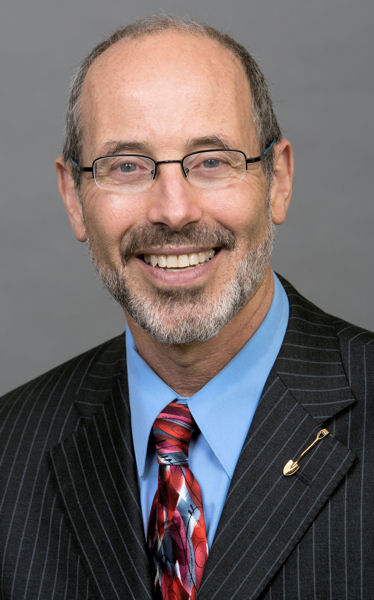The Cuyahoga River, which runs through Cleveland, caught fire 13 times since 1868. It’s been nearly 46 years since the last time the river burned. That 1969 oil-slick river-fire was memorialized on the cover of Time Magazine; the image became a national symbol for water pollution and environmental degradation and fueled public concern for the environment. Now, many of the water sector professionals who entered the workforce because of the environmental movement that followed are retiring and handing over the reins to a new generation.
An environmental movement emerges in the 1970s
The Cuyahoga River fire fueled public concern for the environment and led to the creation of the U.S. Environmental Protection Agency (EPA) in December 1970, and the Clean Water Act in 1972. Numerous other nations also instituted clean water regulations including Japan in 1971 and Germany in 1974.
EPA’s Clean Water Grants Program started in the early 1970s, continuing through 1987 when it changed to a State Revolving Fund loan program. The program provided much of the funding for America’s secondary wastewater treatment infrastructure.
Thousands of baby boomers entered the rapidly growing water-pollution-control sector as environmental and chemical engineers, water chemists, microbiologists, environmental scientists and lawyers, facility operators, and maintenance personnel. These professionals, who planned, designed, constructed, operated, and maintained our facilities, viewed themselves as environmentalists and largely still do.
Making the switch into the water sector
In the mid-1970s, I was a sophomore undergraduate studying meteorology at the University of Massachusetts (Amherst). A majority of meteorologist graduates at that time were going to work for National Aeronautics and Space Administration (NASA) to study the atmosphere of other planets. But the NASA budget was drastically reduced, and job prospects became bleak. With no particular interest in 8 to 10 more years of school, I switched my major to civil engineering.
In retrospect, it was a fortunate, auspicious decision that opened the door to a three-plus decade professional career. It has allowed me to work with and volunteer alongside other dedicated and talented water professionals to protect public health and the water environment. My first project as a consulting engineer at Brown & Caldwell (Walnut Creek, Calif.) was the design of a 379 ML/d (100 mgd) regional water resource recovery facility in Salt Lake City, Utah. Much of that project was funded by EPA Clean Water Grants.
A new generation steps up
Now, the millennials born between the early-1980s and early-2000s, are the students and young professionals who will be leaders of the water resource recovery renaissance.
By 2020, millennials will make up more than half of the U.S. workforce. We are truly witnessing a historic “changing of the guard” within our society and the water sector. Every day, millennials are moving into public- and private-sector positions long held by retiring professionals.
In his book, Fast Future, author David Burstein describes millennials’ approach to social change as “pragmatic idealism,” a deep desire to make the world a better place combined with an understanding that doing so requires building new institutions while working inside and outside existing institutions. This is great news for the water sector.
However, there’s a shortage of environmental engineers, water resource recovery facility (WRRF) operators, instrument technicians and many other professionals essential for the success of the water resource recovery sector. The U.S. Bureau of Labor Standards predicts a 15% increase in the number of environmental engineers needed between 2012 and 2022. Much of the increasing demand is driven by aging water infrastructure coupled with the challenge of extreme weather events and climate change.
Young professionals show leadership skills at WEF events
The great news is we are in very good hands. At the Water Environment Federation (WEF; Alexandria, Va.) Utility Management Conference in Austin, Texas, the Young Professional (YP) attendees were highly enthusiastic, capable, and ready to take on big challenges.
I participated as part of a seasoned professionals panel discussing careers in water during WEF’s YP Summit, held in conjunction with the Utility Management Conference. I explained that studies demonstrate that those actively participating in professional associations early in their careers inevitably become leaders. They go on to work in such positions as general and senior managers of utilities, chief executive officers and vice presidents of environmental consulting firms, equipment manufacturer representatives, preeminent water sector professors, and heads of regulatory agencies.
At the end of the all-day symposium, the room was still full and buzzing. Instead of leaving their tables, the YPs excitedly continued discussing the challenges and opportunities ahead. They continued building new relationships that will inevitably become part of their professional career-support system. Some took the opportunity to ask seasoned professionals to be mentors.
Our panel came away convinced that we have met the future leaders of the water sector and that they are ready and well equipped to lead us forward. They will face the challenges of increasing regulations, crumbling infrastructure, rapidly evolving workforces and work culture, extreme weather events, and net-zero or energy-generating WRRFs.
The new generation of water-sector professionals is well equipped with the technical chops, but more importantly, with strong communication skills and the ability to work effectively with others in the pursuit of important goals. For those of us entering the last decade of our careers, we have an extremely important role to play as mentors, to share our knowledge and wisdom as we “pass the torch” to a new generation of water leaders. This is the time to give back to the water sector that has been so good to us.
Feel free to contact me with your ideas on how WEF can better serve you as members at edmccormick1@icloud.com.
— Ed McCormick, WEF President 2014–2015









April 9, 2015
Featured